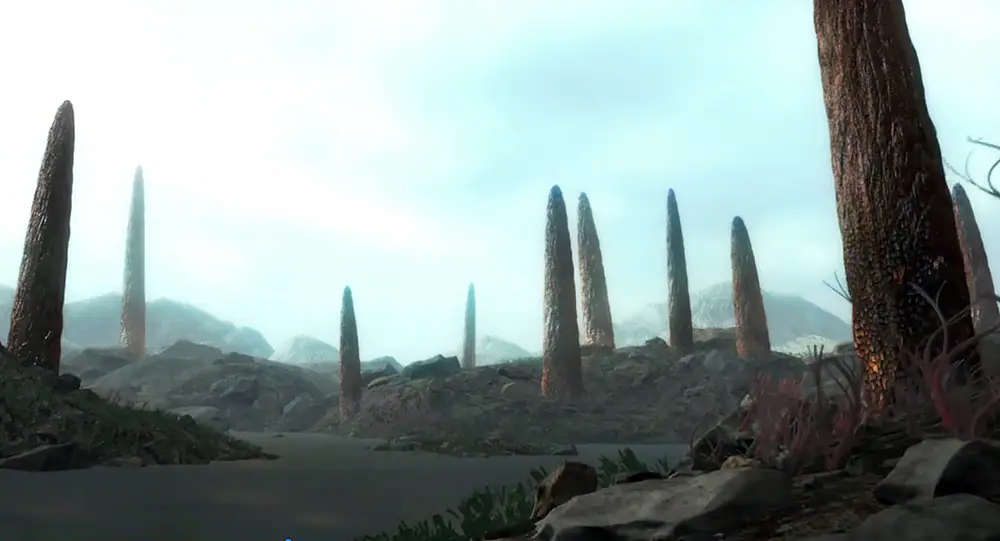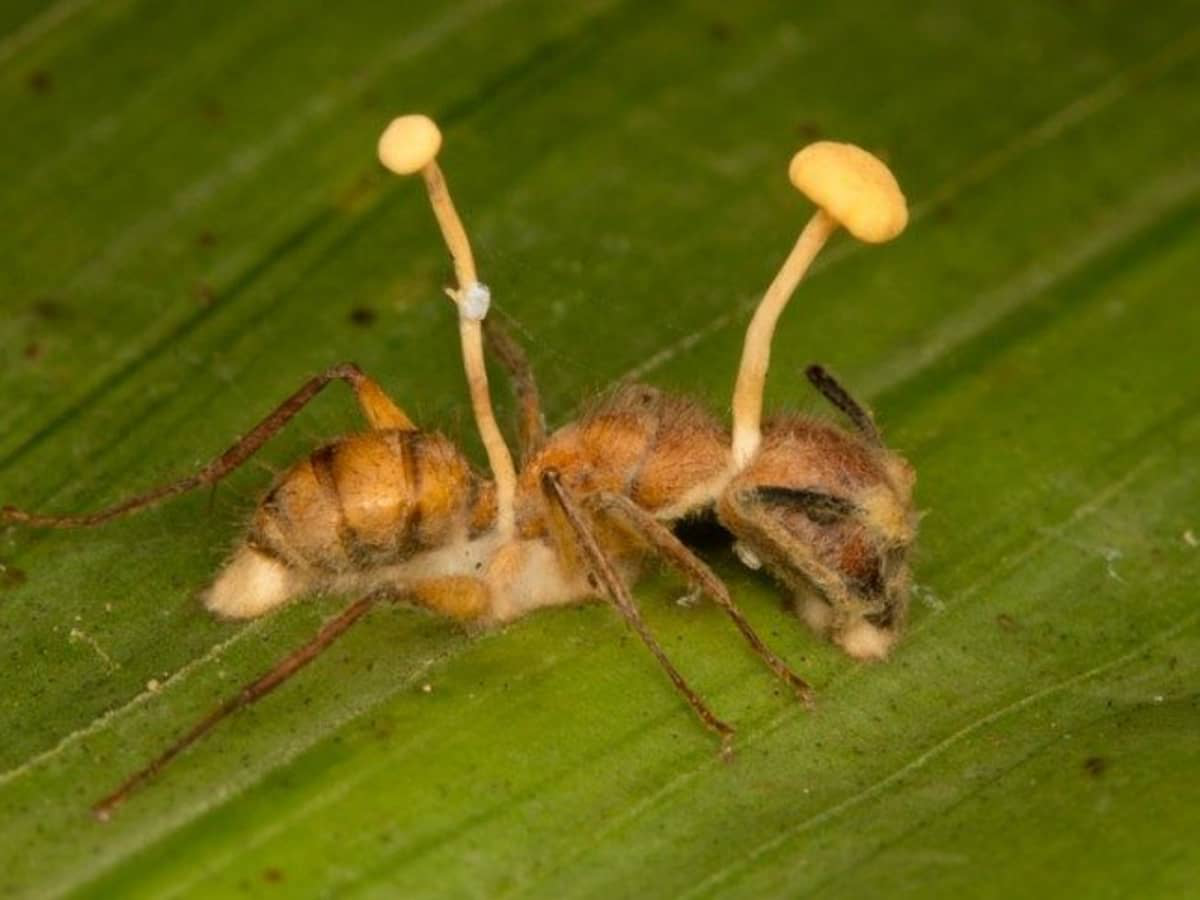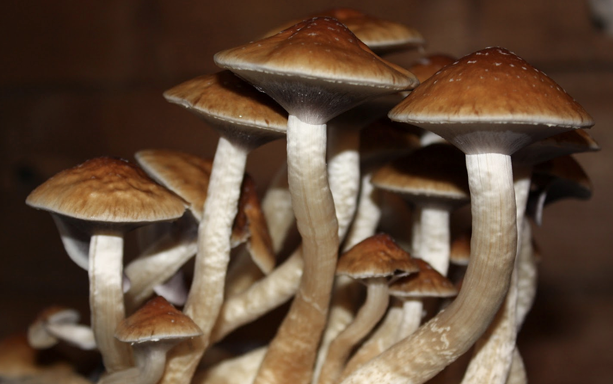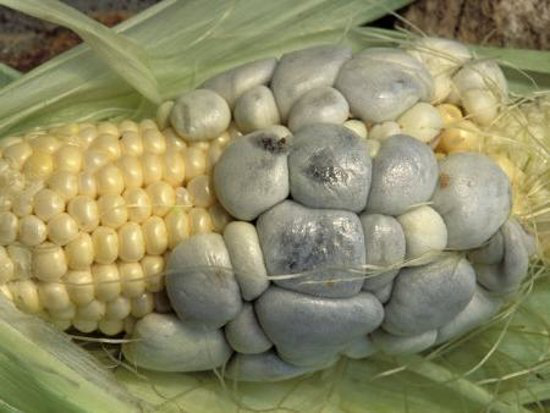

We don’t spend all that much time thinking about mycelium, but our planet wouldn’t be able to support life without the humble mushroom. We here in the Pacific Northwest are especially fortunate in the variation and abundance of fungus that grows in our region and will often be met with large and resplendent examples of this if we take a walk on a drizzly spring or fall afternoon. Some are edible and delicious, some are repugnant, and some you only get to eat once before suffering from total organ failure. Let us now crouch down to the mossy forest floor and have a closer look at something that’s not an animal, but not a plant either. Something both alien and familiar, bizarre, beautiful, mysterious, and magical. Whoa, dude—have you ever really looked at your hands? Like, really?
First collected in 1843, this bizarre fossil stumped paleontologists utterly. Cross-sections of the massive structure/trunk were up to 3 feet across, and the organism reached as tall as 28 feet. It even appeared to have growth rings like a tree, but there was one wee problem with this—the fossil dated to a time before trees. The fibrous material called lignin—which allows plants to stand upright—hadn’t evolved yet. Eventually, the scientists trying to make heads or tails of it just said, "Whatever, you weird fucking tree thing," and pretty much just shoved it up on a shelf to gather dust. I mean, really, who can blame them? It wasn’t until the 2000s when a team of bored nerds with a scanning electron microscope decided to cram the thing in there and see wazzup. What they found was that these things were, in fact, you guessed it, fungus. Giant mushroom dicks that, long before dinosaurs were even a glitter in nature’s eye, dominated the landscape. Sometimes, truth is, indeed, stranger than fiction.

Calm down, Prototaxites!
When I was a teenager, I recall going with my dad to the corner store. He got cigarettes, and I got Laffy Taffy and a copy of my favorite magazine, The Weekly World News. This week the cover showed what appeared to be a gigantic mushroom, as tall as a building, badly cut and pasted next to some anonymous cityscape or something. The headline screamed, "WORLD’S LARGEST MUSHROOM DISCOVERED IN OREGON!" I knew that the paper was hyperbolic at best, complete fabrication at worst, but my dad leaned over and said to me, quite sincerely , "You know, that’s absolutely true." I think my eyes must have bugged out of my head as I nearly choked on my candy, but he went on to explain that it had indeed been discovered, that the largest organism on the entire planet was a mushroom—and it did, indeed, live right here in Oregon. Most people think of a mushroom as a sort of stand-alone thing, but their "root systems," if you will (or more fancifully their mycelial networks), can stretch for miles. The mushrooms we see are just the "fruit" of this underground web of interconnected fibers, and this particular network covered almost 2,400 acres in Oregon’s Blue Mountains. Perhaps not as dramatic as a Godzilla-sized ’shroom, but no less remarkable, IMHO.
Especially prolific in the humid jungles of Southeast Asia, this unassuming little fungus is easily overlooked. Cordyceps, being a genus, contains about 600 species, almost all of which are adapted to do one thing: be nightmare fuel. Cordyceps fungus sporulate (give off spores) when they reach maturity. These spores (like all mushroom spores) are microscopic in size and go utterly unnoticed by animals, wafting along in the air and eventually landing. If they’re lucky, they’ll land on their intended target, insects. One variety of Cordyceps, for instance, specializes in a sort of jungle ant. The spores land on the ant and begin to spread—reaching into the ant’s body and slowly but surely taking control of it, like a demon possessing a semi-truck. It forces the hapless insect up a blade of grass, then latches onto the plant in a death grip with its jaw. At this point, things get really grotesque, as the fungus sprouts one of its horror fruits right out of the head or body of the poor zombified bug. The mushroom matures and releases its spores onto the forest floor below, beginning the whole horrible cycle again. Each kind of Cordyceps specializes in a different insect, and a few even cannibalistically infect other mushrooms. As a fun little side note, Cordyceps militaris is popular in the naturopathic medicine crowd, which strikes me as just an all-around bad idea. Do you all want a zombie apocalypse? Because that is how you get a zombie apocalypse.

Yes, this seems like a mushroom I want to put in my tea...
Look, I know we’ve had a rough couple of years, so I’ll break the news to you as simply as I can. White button mushrooms, brown button mushrooms, and portobello mushrooms are all the same thing. I know, I know, you don’t believe it, but bear with me. Agaricus bisporus is the species, the little brown ones are just immature portobellos, and the white ones are a mutation that’s said to be more visually appealing (and blander, blech). I’m sure you feel as betrayed as I did when I learned this, so take the opportunity to write angry notes and tape them up all over the mushroom section at the grocery store. The only way the truth will come out is if we all raise awareness about these filthy, filthy lies.
While the recorded use of psilocybin goes back at least 10,000 years, the radical mycologist (what a great title) Terrance McKenna has suggested something he calls the "Stoned Ape" theory, which states that the consumption of psychedelic mushrooms by our pre-human ancestors kick started our brains and drove them in to high gear (heh), prompting the evolution of the modern human brain. While not widely accepted by the scientific community, it’s certainly trippy as hell, man. As the medical and psychiatric sciences begin to accept that maybe there is some significant therapeutic value to magic mushrooms, I’m just wondering how I wound up floating in this soap bubble in space, surrounded by weird mandalas of color and sound. Hello? Am I God? Where is everyone? Why does the air smell purple?

Whoa man, like, whoa...
Originating with the Aztecs, this parasitic fungus will infect the kernels on an ear of corn and cause them to bloat into bulbous deformities and turn a sickly color of grey, so of course, it’s considered a delicacy. I’ve never had the pleasure, so I can’t say if the flavor is worthy of its status, but I would say it likely can’t be any worse than it looks. I’m also not sure why they call it corn smut because it looks less smutty and more infected with hellish pus to me, but hey, whatever.

You first.
While nowhere near an exhaustive list of the mycological weirdness that surrounds us, this at least can provide you with enough deeply unsettling knowledge to give you bad dreams for a week, and that’s all I’m really aiming for here.
Esmeralda Rupp-Spangle is lost in between universes and can’t figure out how to untangle time to get back, but that’s okay because she can smell the stars, and it’s all good—no problem. If you’re into it, drop her a psychic voicemail, but you can also catch her on Facebook as Esmeralda Marina and Instagram as @EsmeraldaSilentCitadel.